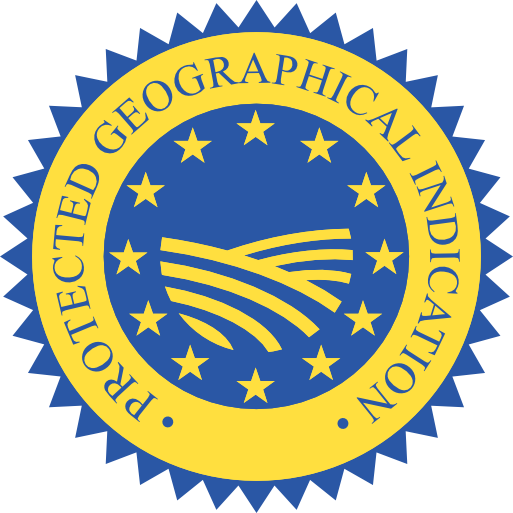PDO Pla de Bages
Website: https://dopladebages.com/es/
History:
The first signs of vines and wine in the Bages region are found in the Roman villas. In the villa of Boades (Castellgalí) a piece of Iberian-Roman ceramics was found dating from the 1st or 2nd centrury BC, containing an inscription with the word VINUM. There were also several remains of amphorae that are preserved at the Museu Comarcal de Manresa. The first indication of wine production was found in La Feliua (Sant Fruitós de Bages). A large stone slab, the base of an old press dating from the end of the Roman times in the 4th or 5th century AD.
In the villa of Sant Amanç (Rajadell), the remains of some terms were found that were subsequently used to make wine. In the same place, one of the mosaic floors shows some grapes and vine shoots. The remains of this floor mosaic are also present at the Museu Comarcal de Manresa.
The fall of the Roman empire and the subsequent Muslim invasion caused depopulation in many lands. The situation would not improve until the 9th century when the Central Catalonia was repopulated. We find the first cultivated vineyards after 940. From the decade of 970 the vineyard area was extended to occupy half of the land. The monastery of Sant Benet de Bages played a fundamental role in this period, most documented donations on the day of the consecration of the monastery’s church came from vineyards.
The Bages was the most inland region of Catalonia where vineyard was cultivated and good wine was produced. Thus Bages was the wine supplier of the so-called mountain lands, in exchange for wheat and other agricultural products.
The expansion of the vineyard in the 14th century was so great that they began to grant protectionist privileges. For example, in 1330 Alfons IV “the forbearing” granted to Santpedor the privilege to prohibit foreigners from entering wine or grape harvest. In fact, this was the moment of maximum splendor of the city of Manresa, with a great growth of the city and the construction of its main works: the new ramparts, “La Seu” basilica, many churches such as El Carme, Sant Pere Martyr, Sant Andreu, Sant Miquel, Sant Pau, Santa Clara and Santa Llúcia, as well as the medieval canal “La Sèquia”, the so-called “Pont Nou” bridge and the Rajadell and Vilomara bridges.
At this time, the Sobrerroca Portal was key to the city because it connected the trail that led to the mountain villages, where the wine was marketed outside the region.
Manresa’s winemaking specialization is evident in the 1408 census, which shows that half of the citizens of Manresa report to have a cellar, wooden vats, wine press tools and barrels at home.
Red wine was the one made in significant volumes. White wine was also precious. Boiled wine was obtained by boiling the must to achieve a sweeter wine.
From 1333, “the bad year”, hunger, plague and wars took place in Catalonia and most of the people fell into poverty.
In the 16th and 17th centuries the wine trade became very important, the elaboration techniques improved and distillates (spirits) became popular.
In the Middle Ages wine was produced at the vineyard. In the northern part of the Bages region there are numerous vinarian cubes carved into de rock the rock. Some examples are found in Sant Cugat del Racó (Navàs) and Gaià. Production at the vineyard had the advantage of facilitating transport, because it was easier to transport the wine than the grapes. However the cubes suffered safety and conservation problems, so, when it was possible, the wine production was moved out to the manors.
In the 14th and 15th centuries we find the use of vats, initially they were made of wood, but this technique would not last. In the middle of the 14th century the first stone vats appear in the interior of the manor, which will be build very frequently from the 17h century. Thus, the traditional vats covered with glazed ceramic tiles of the Pla de Bages were born, with the wooden-grid lid to crush the grapes on top. This system will be used until well into the 20th century.
Between 1860 and 1890 Bages was the region with most vineyards in Catalonia (up to 27,700 hectares). It was the gold fever for the vineyards of this region.
The Bages vineyards had been growing for many years, but the phylloxera plague that devastated the French vine from 1860, caused the demand for wines to shoot up, multiplied prices and prompted the peasant farmers to plant vines everywhere to take advantage of the moment. So the vineyards climbed through the mountains and a new landscape was born structured with dry stone terraces and vineyard huts.
From this time of splendor there remains the unique heritage of the wine vats close to the vineyard, a large part of them located in the Vall del Flequer and the creek of Mura and Sant Esteve. They constitute one of the jewels of the ethnological heritage of Catalonia.
Before the arrival of the phylloxera, some hailstorms and pests of oidium and mildew made poor harvests. In 1889 phylloxera was first detected in Navàs, and by 1985 it already affected all the vineyards in the region.
The existence of the textile sector enabled many families to resist the plague without becoming ruined. Immediately after the plague, they began planting new phylloxera-resistant vines by grafting on American rootstock. The proof is that in the census of 1922 the Bages region recorded 23,394 hectares of vineyards. So it is not acceptable to say that the phylloxera ended with the winemaking tradition in the region.
The post-phylloxera vineyard required new tasks: grafting, sulphuring and applying copper sulfate. All of this required more products and more time… And at the same time cost reduction and quality improvement strategies were also needed. The peasants began to join together, first of all to share purchases and later, to make wine which led to the birth of cooperative wineries of Sanpedor (1922), Salelles (1926) and Artés (1935).
The abandonment of the vineyards in the Bages region was progressive between 1925 and 1989. During the period from 1925 to 1950, most of vines were uprooted due to tensions between landowners and tenants, the Civil War, high cereal prices and improvements in transport – road, haulage and rail.
In the period from 1950-1975 the steep-slope vineyards were abandoned due to the difficulties of mechanising them. In 1955 a great frost ruined all the crop. Many people in this period left their work in the vineyard in favor of a more stable salary.
Between 1975 and 1982 the vineyards continued to decline to 500 hectares in 1989, which represented almost the disappearance of the vineyards in the Bages region.
Description:
The Designation of Origin Pla de Bages groups wineries inherit the long wine-growing tradition of which, in the 19th century, was the region with the most vineyards in Catalonia. These wineries are mostly family holdings, and all of them have their own vineyard. This implies a traditional and very personalized care of the vine which results in the excellent quality of its wines. Currently there are 14 wineries attached to the D.O. Pla de Bages.
NUMBER OF WINERIES: 14
PRODUCTION VOLUME: 1000000
MAIN VARIETY (TOP3): Sauvignon blanc, Gewürztraminer, Cabernet franc, Syrah
TERRITORY (TYPE OF SOIL, LANDSCAPE)
Within a mid-mountain Mediterranean continental climate, the Bages has the ideal conditions for wine cultivation: an exceptional microclimate, low rainfall and a strong thermal oscillation, as well as a clayey and calcareous soil.
Their wines are impregnated with balsamic notes of lavender, thyme and rosemary. These aromatic plants populate the forests of pines, oaks and holm oaks that surround the vineyards.
These peculiarities make the Bages an optimal area for the obtaining of wines of great identity.



